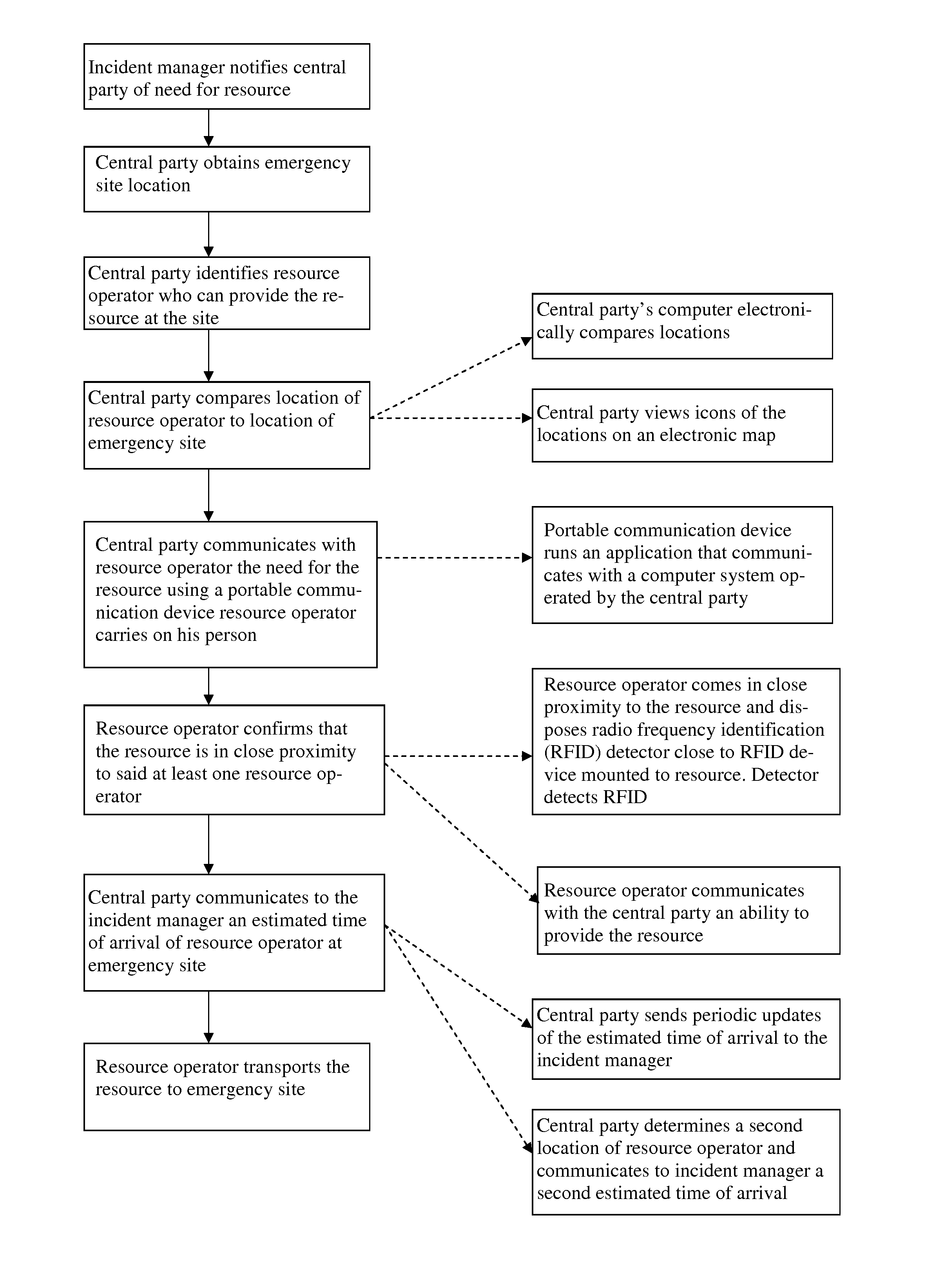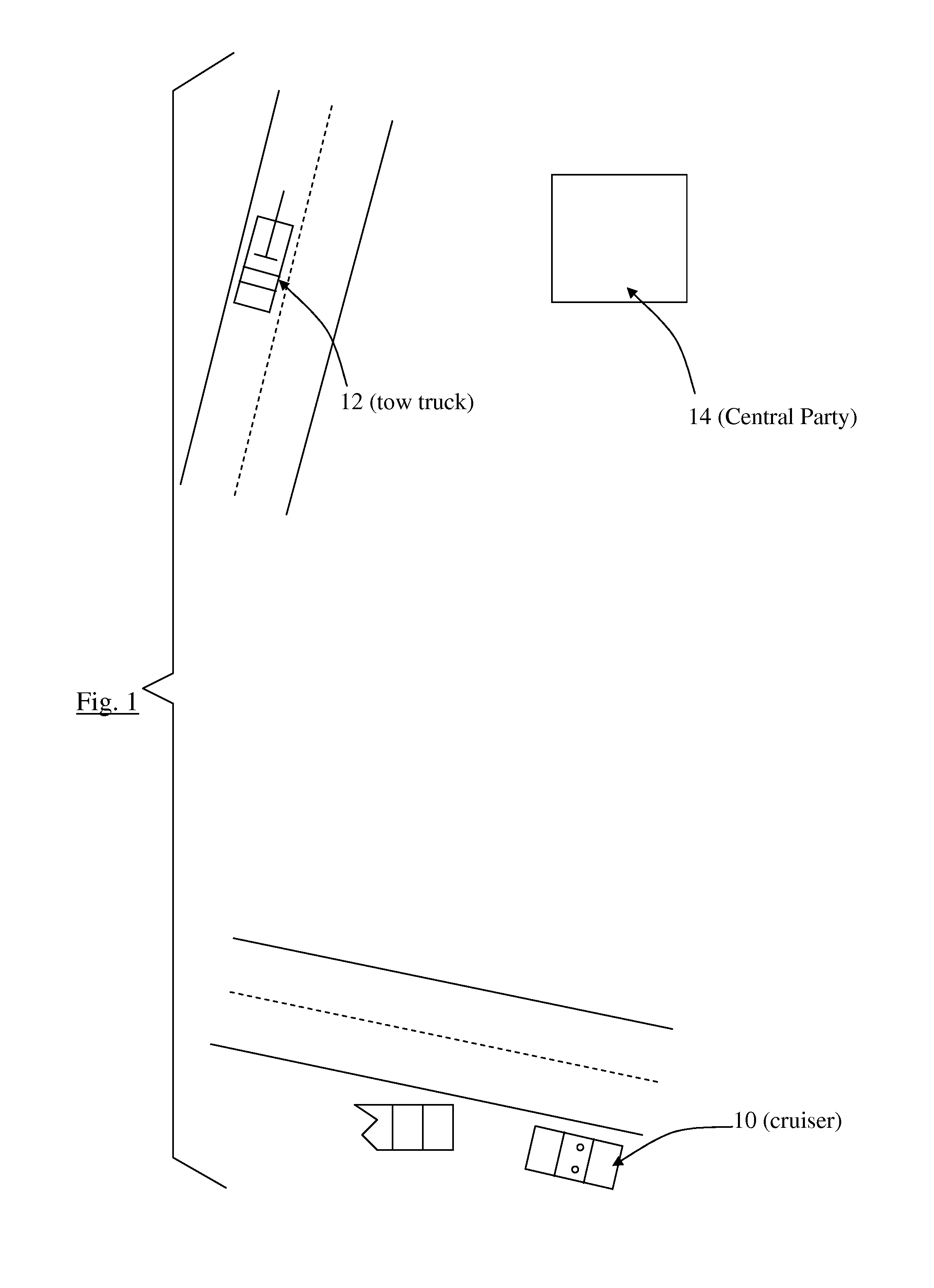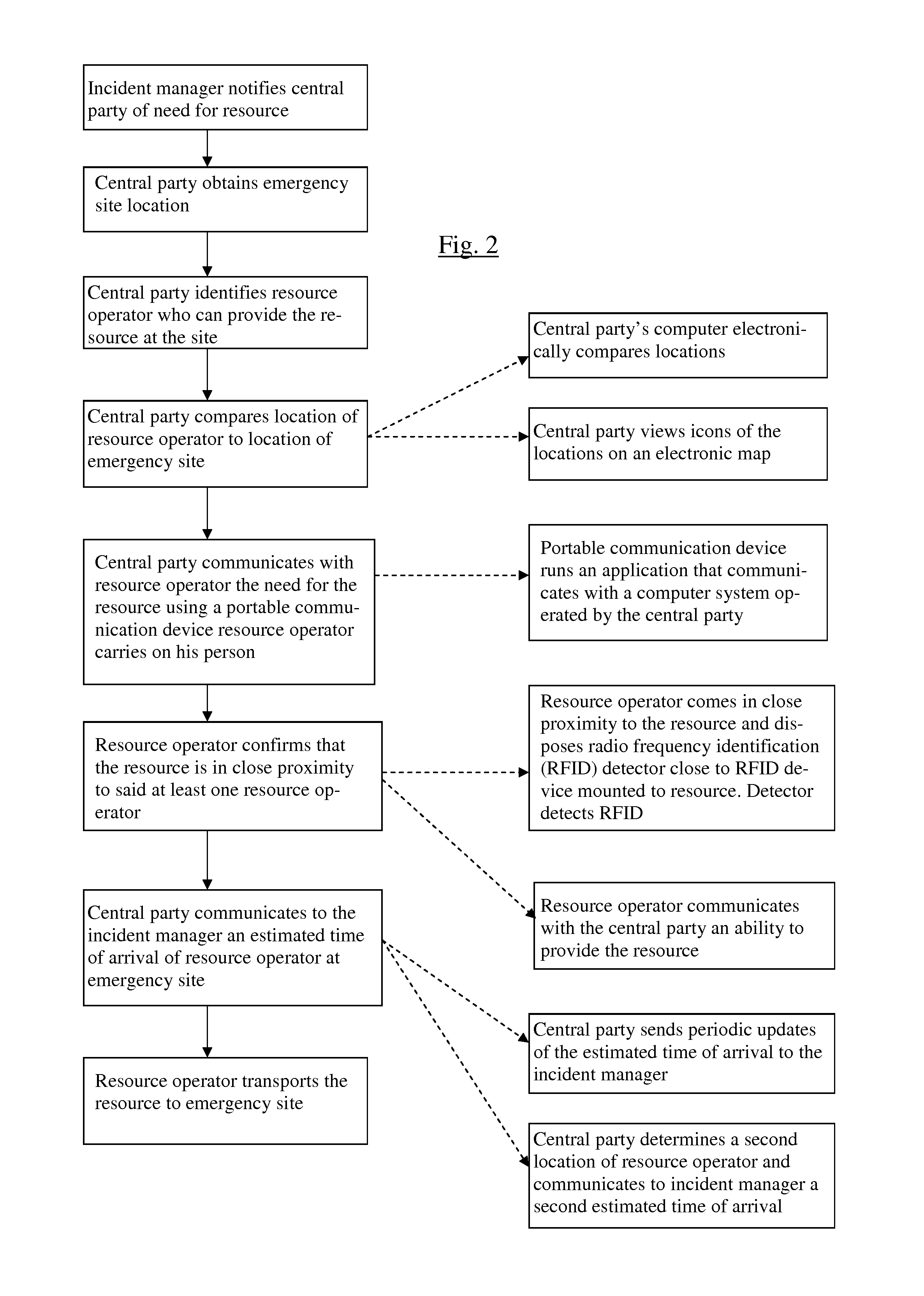Resource tracking and communication system
a technology of resource tracking and communication system, applied in the field of emergency response systems and emergency equipment, can solve the problems of applicant experiencing the inefficiencies of the current resource management system, no guarantee of resource coordination in the rotation system, and the expectation of witnessing the loss of life and property, etc., and achieve the effect of negative impact on the execution of the im
- Summary
- Abstract
- Description
- Claims
- Application Information
AI Technical Summary
Benefits of technology
Problems solved by technology
Method used
Image
Examples
example 1
[0051]As shown in FIG. 1, a highway patrol officer arrives at a site and serves in the role of IM as he requests a tow truck 12 for an accident at the junction of two highways. The system recognizes the officer's cruiser 10 GPS coordinates and notifies the CP of the location of the site. This requested resource is entered into the system by the CP 14 using a graphical user interface that permits the selection of one or more of many pre-programmed resource options. Upon identifying the location, the system searches for and locates the closest available towing responders, and then presents the SLR operators in order of proximity to the incident. These responders have a pre-existing contract to have an operator standing by to respond within minutes and are an SLR A for the highway patrol. The closest SLR operator is contacted and the SLR A operator confirms proximity to the tow truck. After the confirmation is entered into the system, an ETA is created by the system and the CP is notif...
example 2
[0052]In the course of managing a mudslide incident which compromised the availability of drinking water for a rural community, the government officer IM uses a cellular phone to request privately owned water trucks of her dispatcher CP. These resource vehicles have a pre-existing contract with the government to respond on an intermittent basis as needed. They are not normally in daily service for the government, so there is no expectation that an operator is standing by to respond in minutes. The operators of these vehicles are considered to be an SLR B, and after arriving at the resource equipment, the operators confirm proximity using their smartphones to scan QR codes on the equipment and sending that scan to the CP. The operators then travel to the emergency site. The SLR B's are tracked as they travel to the site, and ETA's for each SLR B are communicated periodically to the IM via the radio. The locations of the SLR B's are also tracked afterward as they supply water to the c...
example 3
[0053]While managing a large HAZMAT spill in a mountainous area, the IM decides there is a need for locally owned dump trucks to assist with placing material in the path of HAZMAT draining down a ravine. These resources are not operating with prior contractual agreements and are not equipped with RFID cellular devices, and therefore are are SLR C status responders. While their locations are not determined by RFID cellular devices, the SLR C operators communicate their current location and proximity to their equipment to a CAD dispatcher at the RMC while departing to the incident. The dispatcher enters this into the system which creates a GPS location for the SLR C operators. The additional and updated locations while in transit for SLR C operators are determined as deemed necessary by the RMC. These actions will facilitate the tracking and determinations of ETA's for a responding SLR C. Once they arrive on the scene, the SLRC's are tracked to ensure that all invoiced miles invoiced ...
PUM
 Login to View More
Login to View More Abstract
Description
Claims
Application Information
 Login to View More
Login to View More - R&D
- Intellectual Property
- Life Sciences
- Materials
- Tech Scout
- Unparalleled Data Quality
- Higher Quality Content
- 60% Fewer Hallucinations
Browse by: Latest US Patents, China's latest patents, Technical Efficacy Thesaurus, Application Domain, Technology Topic, Popular Technical Reports.
© 2025 PatSnap. All rights reserved.Legal|Privacy policy|Modern Slavery Act Transparency Statement|Sitemap|About US| Contact US: help@patsnap.com



